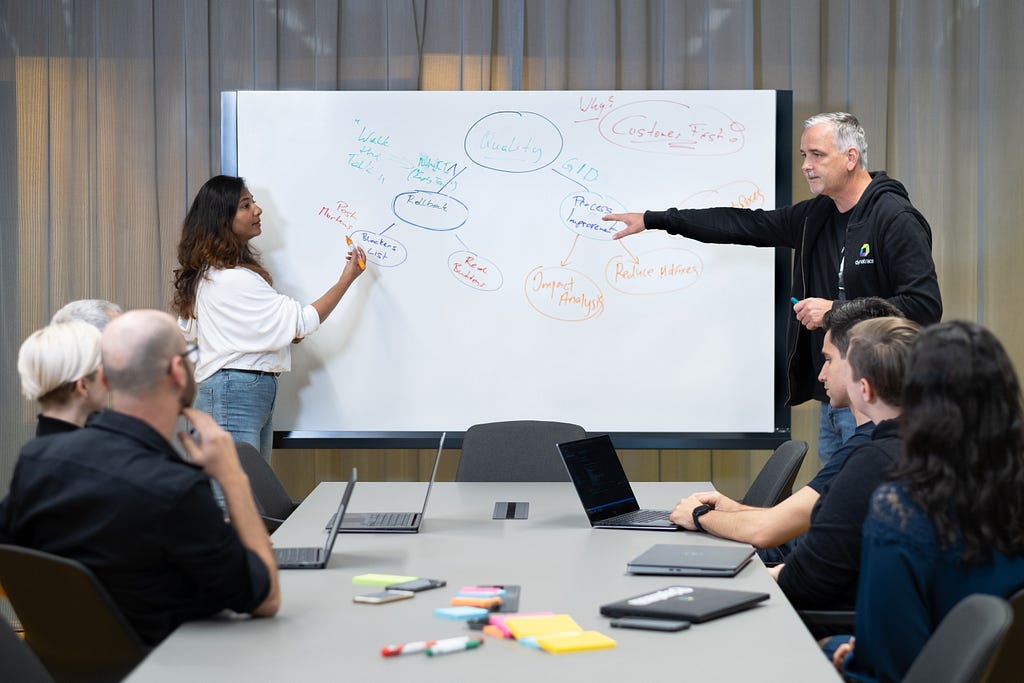What is the future of work at Dynatrace?
Does the “new normal” mean fully remote work? Is there an alternative?

*** Disclaimer: The work model explored in this article is one version of our constantly evolving approach to work and we’ve further adapted it. For our updated work model, please visit our careers page. ***
The beginning of 2020 was a paradigm-shifting moment for everyone. After decades of commuting and working from busy offices in the corporate world, everything came to a screeching halt when many employees packed their laptops and set up camp in their own homes, tapping away at their keyboards, hoping that this lockdown would soon be over.
A little more than a year has passed, and remote work is here to stay.
In the IT industry, working from home was not completely unheard of. However, it was often only allowed to remote contractors and only on rare occasions to in-house employees. With most work done on the internet, it seems foolish now that working from home was not more common. Some may say that, just like the digital transformation of many businesses, the pandemic just accelerated a trend that would happen in the long run anyway. Employees don’t need to be location-bound to be productive and do their job correctly. On the other hand, remote working increases the “silo-effect,” meaning that teams tend to stick together and networks become increasingly smaller, negatively affecting workplace innovation. Some might also just miss having a casual conversation with their colleagues at the coffee machine (or barista, like in our Linz Headquarters).
“When you lose connections, you stop innovating. It’s harder for new ideas to get in, and groupthink becomes a serious possibility.”
Dr. Nancy Baym, Senior Principal Researcher at Microsoft from The next great disruption is hybrid work — are we ready?
Now that vaccines are being rolled out and it’s becoming safer to meet other people in real life, many have opted to come back to the office several times a week for some much-needed facetime. At Dynatrace, we are happy to see our offices filling up again with more and more people. We value the safety of our Dynatracers, and we do not force them to come back to the office, but we are happy that our employees see the same value in in-office work and face-to-face collaboration as we do.
We are all hoping that the new year will bring us closer to normality, and it’s hard to predict what the future holds. However, Dynatracers and job applicants have often asked what the Dynatrace work model will look like post-pandemic.
Will we become a fully remote company? Will we all return to the office full-time? Or will we have a hybrid workplace setup?
The answer is Hybrid. And here’s why:
Both working from home and from the office have their unique benefits and disadvantages, and we believe it’s impossible to mandate only one model for the whole Dynatrace workforce. We have diverse employees, teams, and roles — each with their own needs and preferences — one size doesn’t fit them all!
A Dynatracer should choose their work location based on their team and job requirements. Here’s an overview of our main options:
- Those who are more productive in the office and wish to primarily work from there will have their own assigned desk and equipment. (a.k.a. In Office)
- Those who are more productive in a hybrid work set-up will have that possibility, but there is a minimum requirement of 2 days in the office per week. In this case, workstations will be shared and will have to be booked beforehand in a hoteling software. (a.k.a. Hybrid)
- Working fully remotely is only possible for some specific roles that need to be judged and approved on a case-by-case basis. (a.k.a. Remote)
We encourage our employees to choose to be in the office for those days when they have meetings with colleagues from the same lab. For example, developer teams should be in the office for sprint planning, backlog grooming, retrospectives, and so on. This encourages team building and fosters a collaborative and innovative environment, which is a vital part of the Dynatrace culture.

This hybrid model fulfills our goals of:
- Allowing for flexibility for Dynatracers.
- Reviving and expanding our collaborative networks.
- Fueling innovation.
Going hybrid is not about saving office capacities. Our Labs are our home bases and hubs; we won’t stop investing in them. Furthermore, we know that collaborative spaces are essential since they enable social interactions that are key to innovation and staying ahead of our competition. We will invest in new office spaces and our existing offices by adjusting them to future needs. This means we will install acoustic elements, smaller work booths, additional meeting rooms, etc. to mention a few examples.
The details of our work model may change, but this is the general direction we are aiming for. We’re planning on a global implementation once a “new normal” is foreseeable. Choosing a model only makes sense if we can live by it, which means a stable level of “normality.”
If you are interested in learning more about working at Dynatrace, check out our careers portal for all our current open positions.
What is the future of work at Dynatrace? was originally published in Dynatrace Engineering on Medium, where people are continuing the conversation by highlighting and responding to this story.
